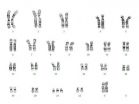(Press-News.org) Boston—Researchers from Boston University School of Medicine (BUSM) have discovered that the anti-seizure drug ezogabine, reduced alcohol consumption in an experimental model. The findings, reported in the American Journal of Drug and Alcohol Abuse, may lead to more effective treatments for alcoholism.
Excessive consumption of alcohol is one of the leading causes of illness and death in the U.S. and has significant negative economic impact by limiting the productivity of workers and necessitating huge health care expenditures.
According to the researchers, this study provides the first evidence that alcoholism can be treated by this newly discovered mechanism that helps to regulate brain activity known as Kv7 channel modulation. "This finding is of importance because ezogabine acts by opening a particular type of potassium channel in the brain, called the Kv7 channel, which regulates activity in areas of the brain that are believed to regulate the rewarding effects of alcohol," explained lead author Clifford Knapp, PhD, associate professor of psychiatry at BUSM. "This research indicates that drugs that open Kv7 channels might be of value in the treatment of alcoholism," he added.
Previous studies conducted by this research group helped to establish the value of anti-seizure drugs as medications to treat alcoholism. However, further research needs to be conducted to establish that the effects of this drug result primarily from its actions on Kv7 channels. "Because of the close proximity of the doses at which ezogabine reduces drinking and those at which it is reported to produce motor impairment, it is still important to continue to investigate how selective the actions of ezogabine are on the neuronal mechanisms that control alcohol consumption," said Knapp.
The researchers believe these finding will encourage the search for other drugs that act on this system to discover more effective treatments for alcoholism.
INFORMATION:
This work was supported by the NIH Grant R01AA015923 (to senior author Domenic A. Ciraulo, MD) and by funds received from the Gennaro Acampora Charitable Trust Fund.
BUSM researchers find anti-seizure drug may reduce alcohol consumption
2014-04-17
ELSE PRESS RELEASES FROM THIS DATE:
Trisomy 21: How an extra little chromosome throws the entire genome off balance
2014-04-17
Occurring in about one per eight hundred births, Down syndrome - or trisomy 21 - is the most frequent genetic cause of intellectual disability. It results from a chromosomal abnormality where cells of affected individuals contain a third copy of chromosome 21 (1% of the human genome). A study conducted by Stylianos Antonarakis and his team in the Department of Genetic Medicine and Development at the University of Geneva (UNIGE) Faculty of Medicine, published in Nature, shed light on how the extra chromosome 21 upsets the equilibrium of the entire genome, causing a wide ...
Re-emergence of Ebola focuses need for global surveillance strategies
2014-04-17
NEW YORK – April 17, 2014 – EcoHealth Alliance, a nonprofit organization that focuses on conservation and global public health issues, published a comprehensive review today examining the current state of knowledge of the deadly Ebola and Marburg virus. The review calls for improved global surveillance strategies to combat the emergence of infectious diseases such as the recent outbreak of Ebola in West Africa that has claimed the lives of 122 people in the countries of Guinea and Liberia. According to the World Health Organization (WHO), the deadly Ebola virus can cause ...
Long-term effects of battle-related 'blast plus impact' concussive TBI in US military
2014-04-17
New Rochelle, NY, April 17, 2014—U.S. military personnel who served in Iraq and Afghanistan and suffered "blast plus impact" concussive traumatic brain injury (TBI) were compared to military personnel without TBI who were evacuated for other medical reasons. Differences in measures of overall disability, cognitive function, post-traumatic stress, and depression 6-12 months after injury are reported in an article in Journal of Neurotrauma, a peer-reviewed journal from Mary Ann Liebert, Inc., publishers. The article is available free on the Journal of Neurotrauma website ...
Fish consumption advisories fail to cover all types of contaminants
2014-04-17
A new modeling study suggests that fish consumption advisories for expecting mothers are ineffective in reducing infant exposure to long-lived contaminants like persistent organic pollutants (POPs).
The study, performed by a team of researchers including University of Toronto Scarborough PhD student Matt Binnington and Professor Frank Wania, looks at how different levels of environmental contamination, a mother's compliance with advisories, and the behavior of chemicals in the body influenced exposure in her children.
Their model estimates that women who stop eating ...
Proper stem cell function requires hydrogen sulfide
2014-04-17
Stem cells in bone marrow need to produce hydrogen sulfide in order to properly multiply and form bone tissue, according to a new study from the Center for Craniofacial Molecular Biology at the Herman Ostrow School of Dentistry of USC.
Professor Songtao Shi, principal investigator on the project, said the presence of hydrogen sulfide produced by the cells governs the flow of calcium ions. The essential ions activate a chain of cellular signals that results in osteogenesis, or the creation of new bone tissue, and keeps the breakdown of old bone tissue at a proper level.
Conversely, ...
Orchid named after UC Riverside researcher
2014-04-17
RIVERSIDE, Calif. — One day about eight years ago, Katia Silvera, a postdoctoral scholar at the University of California, Riverside, and her father were on a field trip in a mountainous area in central Panama when they stumbled upon an orchid they had never seen before.
Unable to identify it, they contacted German Carnevali, a world authority on orchids. The orchid turned out to be an unnamed species. So Carnevali recently named it after the Silveras: Lophiaris silverarum.
"Lophiaris" is the genus name, comprising about 40 species in the world. Carnevali, the director ...
New MRSA superbug emerges in Brazil
2014-04-17
An international research team led by Cesar A. Arias, M.D., Ph.D., at The University of Texas Health Science Center at Houston (UTHealth) has identified a new superbug that caused a bloodstream infection in a Brazilian patient. The report appeared in the April 17 issue of The New England Journal of Medicine.
The new superbug is part of a class of highly-resistant bacteria known as methicillin-resistant Staphylococcus aureus or MRSA, which is a major cause of hospital and community-associated infections. The superbug has also acquired high levels of resistance to vancomycin, ...
Study IDs new cause of brain bleeding immediately after stroke
2014-04-17
Irvine, Calif., April 17, 2014 — By discovering a new mechanism that allows blood to enter the brain immediately after a stroke, researchers at UC Irvine and the Salk Institute have opened the door to new therapies that may limit or prevent stroke-induced brain damage.
A complex and devastating neurological condition, stroke is the fourth-leading cause of death and primary reason for disability in the U.S. The blood-brain barrier is severely damaged in a stroke and lets blood-borne material into the brain, causing the permanent deficits in movement and cognition seen ...
20 years of data shows treatment technique improvement for advanced abdominal cancer
2014-04-17
WINSTON-SALEM, N.C. – April 17, 2014 – Meaningful long-term survival is possible for selected patients suffering from advanced cancer of the abdomen when treated with cytoreductive surgery with Hyperthermic IntraPeritoneal Chemotherapy, or HIPEC, according to a first-of-its-size analysis by physicians at Wake Forest Baptist Medical Center.
Wake Forest Baptist has the largest reported, single-center experience with cytoreductive surgery and HIPEC, said lead author Edward A. Levine, M.D., and analysis of 20 years' worth of patient data shows that outcomes have clearly improved ...
Surprising material could play role in saving energy
2014-04-17
One strategy for addressing the world's energy crisis is to stop wasting so much energy when producing and using it, which can happen in coal-fired power plants or transportation. Nearly two-thirds of energy input is lost as waste heat.
Now Northwestern University scientists have discovered a surprising material that is the best in the world at converting waste heat to useful electricity. This outstanding property could be exploited in solid-state thermoelectric devices in a variety of industries, with potentially enormous energy savings.
An interdisciplinary team led ...





